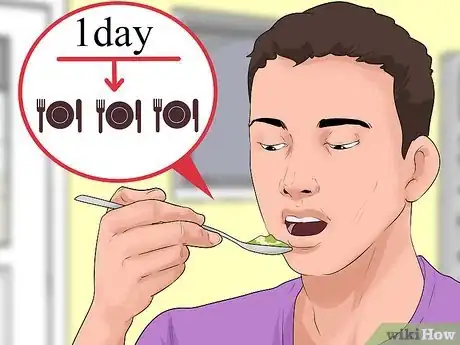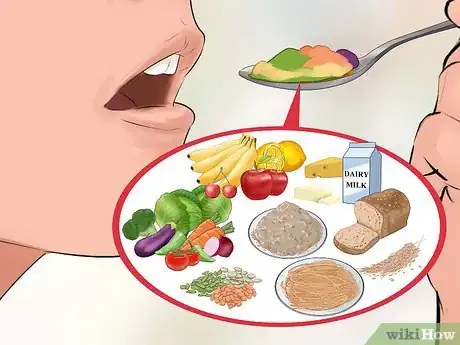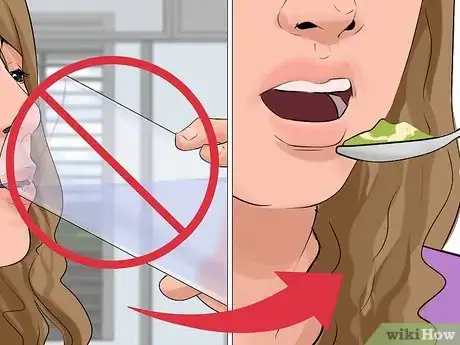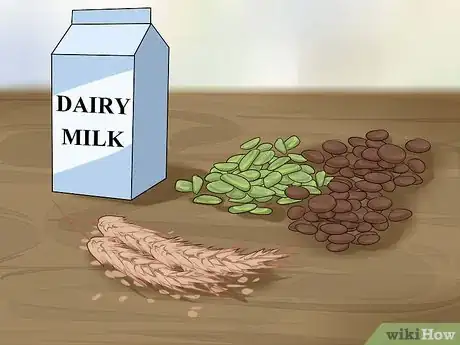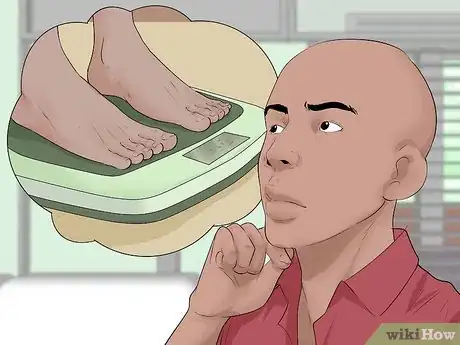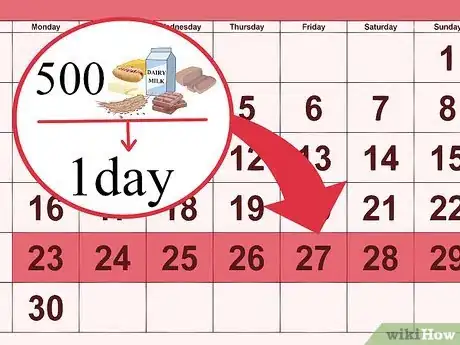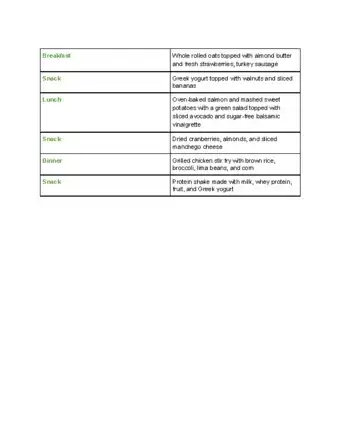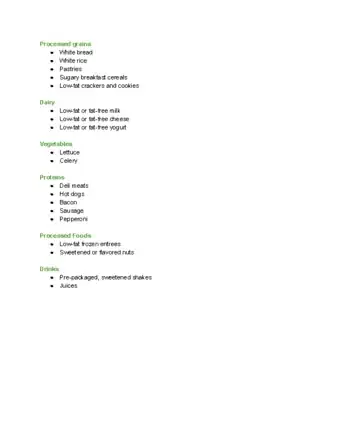This article was co-authored by Claudia Carberry, RD, MS. Claudia Carberry is a Registered Dietitian specializing in kidney transplants and counseling patients for weight loss at the University of Arkansas for Medical Sciences. She is a member of the Arkansas Academy of Nutrition and Dietetics. Claudia received her MS in Nutrition from the University of Tennessee Knoxville in 2010.
wikiHow marks an article as reader-approved once it receives enough positive feedback. This article received 15 testimonials and 87% of readers who voted found it helpful, earning it our reader-approved status.
This article has been viewed 336,978 times.
Weight loss can be a symptom of diabetes. Because your body is unable to make use of sugar in the blood, those calories that would normally be utilized are lost. Even though you might be eating a normal amount of food, this loss of sugar and calories due to diabetes will still cause you to lose weight.[1] However, you can still work with your diabetes and maintain a healthy weight.
Steps
Changing Your Diet
-
1Eat frequently. You may find that you feel full after eating very little food. If this is the case, eating the standard three meals a day may cause you to not eat enough at these meals. Instead of trying to eat three large meals a day, break those meals up, eating more frequently.[2]
- Eat five to six meals a day, instead of the three or two usual meals.
- Add toppings and extras to your food for a caloric boost.
- Eat as much as you can when you do.
-
2Eat foods that are nutrient-rich. Try to eat foods that contain high levels of nutrients to ensure that you are still receiving enough nutrition. Simply eating more food to gain weight won't guarantee that you stay healthy. Try to eat some of the following foods to get the right amount of nutrition.[3]
- Grains, pasta and breads should be whole grain. Avoid processed versions of these.
- Eat plenty of fruits, vegetables, dairy, nuts, seeds, and lean meats.
- You may want to try shakes or smoothies.
- As always, monitor your diet to provide appropriate levels of sugars.
Advertisement -
3Avoid drinking any liquids before a meal. Some people may find that drinking a beverage of any type before a meal can spoil their appetite. Drinking a beverage may lead you to feel full, before you have actually eaten any food. Avoid this by not drinking anything at least half an hour before a meal.[4]
- If you do want something to drink before a meal, make sure it's something that has nutrients and calories.
-
4Eat the right snacks. If you enjoy snacks throughout the day, between meals, make sure they offer a great nutritional value. Snacks should be additional fuel for the body to hold you over between meals. They should not be an opportunity to graze on junk foods, especially if you have diabetes. Gaining weight will require an increase in caloric intake and health requires proper nutrition. Try some of the following foods to make sure you get both calories and nutrients in your snacks:[5]
- Nuts
- Cheese
- Peanut butter
- Avocados
- Dried fruits
-
5Eat the right kind of carbohydrates. Increasing the amount of carbohydrate levels can be a great way to add weight and provide energy to the body. However, diabetics should be aware that carbohydrates can affect blood glucose levels. Try eating the following foods to add carbohydrates without causing dangerous levels of glucose.[6]
- Whole grains
- Beans
- Milk
- Yogurt
-
6Add weight by eating the right fats. Fats are some of the most calorically dense foods available. By eating a diet rich in fat, weight gain can happen quickly and easily. However, not all fats are the same in regards to your health. Monounsaturated and polyunsaturated fats are considered "good" fats in moderation, while you should try to avoid saturated and trans fats all the time. Eat some of the following foods to get the healthiest types of fat you can in your diet.[7]
- Use olive or canola oil when you cook.
- Eat nuts, seeds, and avocados.
- Try natural peanut, cashew, or almond butters.
- As always, monitor your glucose levels as you make changes in your diet to keep them at a safe level.
Setting Goals
-
1Learn what your healthy weight is. Not everyone will have the same healthy weight goals, as each person's body will vary. Many people do not understand what a healthy weight is, and for that reason, strive to hit the wrong goals. Being under or overweight can affect your health, so strive for the optimum level of body weight.[8]
- The most common measurement to determine ideal body weight is known as BMI, or body mass index.
- Many calculators are available online to help you determine your BMI.
- The formula used for imperial calculation of BMI is weight (lb) / [height (in)]2 x 703[9]
- The formula used for metric calculation of BMI is weight (kg) / [height (m)] 2 [10]
- Generally, a range of 18.5 to 24.9 using the BMI, is considered normal body weight.
-
2Understand caloric intake. At its core, weight gain results from increased caloric consumption. By eating more, you will gain more weight. However, you should still learn to estimate how many calories you need daily to gain weight.[11]
- Count how many calories you are currently eating in a day.
- Add 500 calories a day, for one week. Check for weight gain.
- If no weight was gained, add another 500 calories a day next week.
- Do this until weight starts to accumulate. Maintain that level of caloric intake until a healthy weight is achieved.
- A rough estimate of calorie intake required to gain weight is around 3,500 calories a day. This will equate to gaining around 1lb.
-
3Exercise. Exercise can help add muscle, and in turn, lead to weight gain. You may also increase appetite levels after a workout.[12] By increasing food intake, and exercise, you help turn the extra food into muscle instead of fat.
- Weight lifting or strength training is the best way to transform the increased calories into muscle.[13]
- Exercise is a great way to meet your goals in a healthy way.
Foods to Eat and Avoid
References
- ↑ http://www.mayoclinic.org/diseases-conditions/diabetes/in-depth/diabetes-symptoms/art-20044248
- ↑ http://www.mayoclinic.org/healthy-lifestyle/nutrition-and-healthy-eating/expert-answers/underweight/faq-20058429
- ↑ http://www.mayoclinic.org/healthy-lifestyle/nutrition-and-healthy-eating/expert-answers/underweight/faq-20058429
- ↑ http://www.mayoclinic.org/healthy-lifestyle/nutrition-and-healthy-eating/expert-answers/underweight/faq-20058429
- ↑ http://www.mayoclinic.org/healthy-lifestyle/nutrition-and-healthy-eating/expert-answers/underweight/faq-20058429
- ↑ http://www.diabetesselfmanagement.com/blog/keeping-the-pounds-on-strategies-for-gaining-weight/
- ↑ http://www.diabetesselfmanagement.com/blog/keeping-the-pounds-on-strategies-for-gaining-weight/
- ↑ http://www.niddk.nih.gov/health-information/health-statistics/Pages/overweight-obesity-statistics.aspx
- ↑ http://www.cdc.gov/healthyweight/assessing/bmi/adult_bmi/index.html#Interpreted
- ↑ http://www.cdc.gov/healthyweight/assessing/bmi/adult_bmi/index.html#Interpreted
- ↑ http://www.diabetesselfmanagement.com/blog/keeping-the-pounds-on-strategies-for-gaining-weight/
- ↑ http://www.mayoclinic.org/healthy-lifestyle/nutrition-and-healthy-eating/expert-answers/underweight/faq-20058429
- ↑ http://www.diabetesselfmanagement.com/blog/keeping-the-pounds-on-strategies-for-gaining-weight/
About This Article
To gain weight if you have diabetes, start by eating 5-6 meals a day instead of the usual 2-3 meals. Eat nutrient-rich foods like whole grains, fresh fruit and veggies, and lean meats rather than filling up on empty calories and processed foods. Also, smoothies can be a helpful way to work extra calories into your diet. Add 500 extra calories to your daily caloric intake and maintain that for 1-2 weeks. Then, if your weight isn't changing, add 500 more calories and check again in a week. Do this until weight starts to accumulate, then maintain that level of caloric intake until you reach your target weight. For exercise tips that can help you gain muscle mass, read on!
